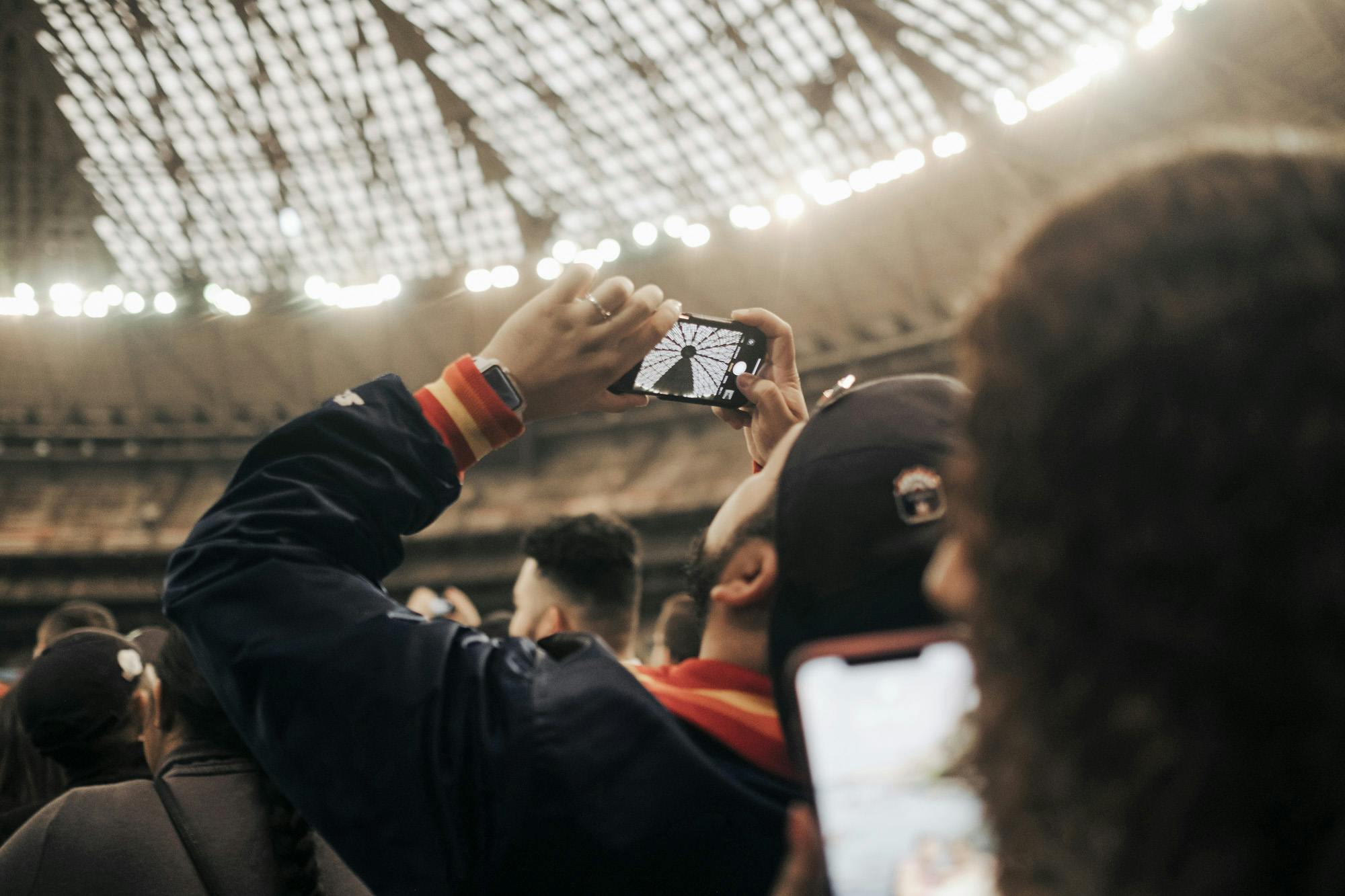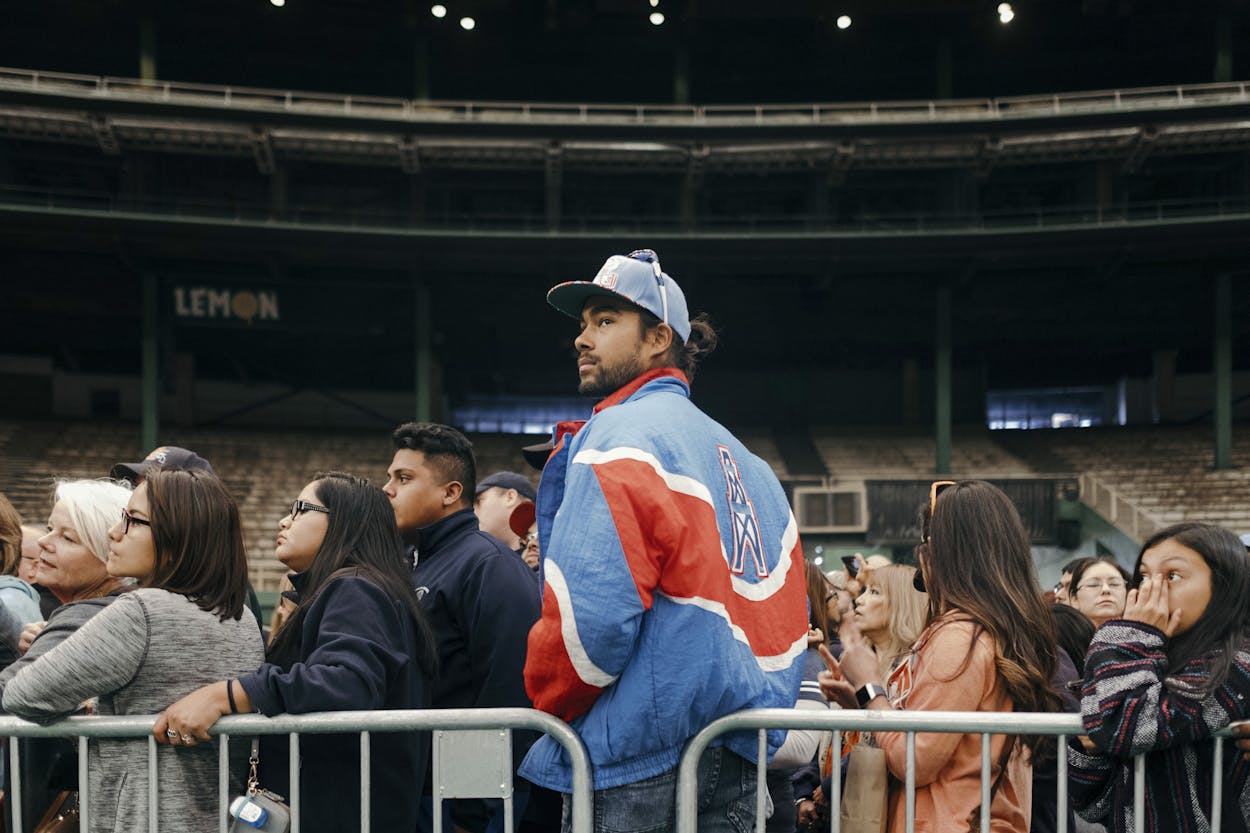When the Astrodome opened to the public on April 9, 1965 with an exhibition game between the Houston Astros and the New York Yankees—led by Mickey Mantle, who would use the occasion to chalk up both the first hit and the first home run in the vast new stadium—the 47,000-plus spectators were greeted at the turnstiles by ticket-takers, known as Space Cadets, dressed in blue and orange spacesuits, complete with a glass-fronted space helmet. They were then led to their seats by one of the dozens of female ushers, or Spacettes, identically outfitted in gold lamé skirts, epaulettes, and Astrodome-shaped pillbox hats. “It was such an exciting event when the Dome opened,” explained Barbara Hauser, one of the original Spacettes. “People came from all over the world to see it.”
Half a century later, visitors returned to the Astrodome for a less festive occasion—to say goodbye to the stadium before its $105 million renovation into an event space and parking facility. Thousands of people made a final pilgrimage to the Astrodome on Monday: long-time Houstonians, out-of-towners, recent Astros bandwagon fans, and even Spacettes like Hauser, who wore a replica of her uniform from 1965.


The Astrodome Conservancy, the non-profit organization that oversees the long-shuttered stadium, organized yesterday’s “Domecoming” to give Houstonians a last look at their city’s most iconic building and to raise money to help keep it alive. The 25,000 free tickets were snapped up less than two hours after they went on sale, and on Monday afternoon the line to get into the stadium stretched nearly all the way around the Dome. As children played on the freshly mown grass, beer vendors made their way along the slow-moving line, selling Dome Faux’m (pronounced ‘Foam,’ natch), a cream ale created by Houston’s 8th Wonder Brewery in honor of the sudsy concoction once served at the Astrodome.
“Coldest foam in the dome!” Earl Lloyd called out as he pushed his beer cart down the line. Lloyd worked as a vendor at the Astrodome from 1992 until 1999, when the team moved to Minute Maid Park. Today, he works concessions at Minute Maid and at nearby NRG Stadium, but like many other Houstonians, he remains nostalgic for the Dome. “Man, that was so much fun,” he said. Beer sales for Domecoming, he had to admit, were somewhat lackluster. “This is a history crowd, not a drinking crowd.”
Ruben Rodriguez, 29, had left work early to attend the event. He was in line with his mother, his girlfriend, two of his sisters, and two nephews. Rodriguez, who wore an Astros t-shirt and cap, remembered going to Astros games as a family bonding experience when he was growing up. “So much happened here,” he said, mentioning Selena’s famous 1995 concert during the Houston Livestock Show and Rodeo. “Minute Maid Park is good, but it’s not the same. This has history.”


Once inside the Astrodome, visitors were treated to an exhibition of Astrodome memorabilia, including original scale models of the structure, vintage Astros and Oilers jerseys, the former lockers of Astros greats Jeff Bagwell and Craig Biggio, and the home plate from the final Astros game at the Dome. Oilers Hall of Famer Elvin Bethea was on hand to chat with visitors, as were Astros slugger Jimmy Wynn and Oilers quarterback Dan Pastorini.
But the biggest attraction, of course, was the Dome itself, which has sat vacant since 2005, when it was briefly reopened as an emergency shelter for New Orleans residents fleeing Hurricane Katrina. Most of the brightly colored, padded seats have long since been ripped out and sold to fans, leaving only a small section of yellow and orange seats in the upper deck. Most of what used to be the playing field is now used for storage: giant stacks of rolled-up Astroturf and padding were everywhere.
Carmen Tydings and Jamie Muffoletto had taken off work and driven down from Austin to take this final look at the Dome. “We used to have season tickets right over there,” Tydings said, pointing to a section of the stands near an advertisement for Continental Airlines. Near them in line was J.J. Henderson, an officer with the Houston Police Department who has been working security for the Astros since their final year in the Dome. He showed off his Astros championship ring, which owner Jim Crane recently gave to every team employee.

Henderson recalls playing high school football games in the Dome in the 1970s. “The artificial turf had these zippers where the sections were put together,” he said. “If you landed on one of those zippers, you were losing some skin.” Suddenly, Henderson spotted Pastorini, the quarterback who led the Oilers to the AFC Championship game in 1979 in the heart of the “Luv Ya Blue” era. The police officer walked over and introduced himself, saying he was a huge fan. Pastorini graciously acknowledged the praise and shook Henderson’s hand.
As he walked away, the police officer shook his head in wonderment, genuinely starstruck.
“Best arm I’ve ever seen,” he said.
- More About:
- Texas History
- Sports








